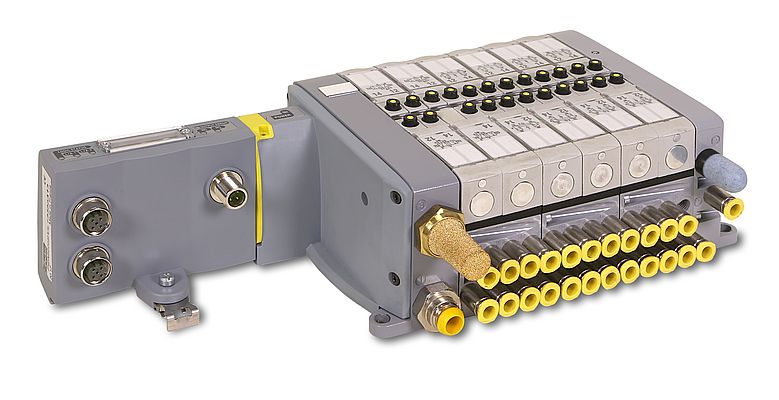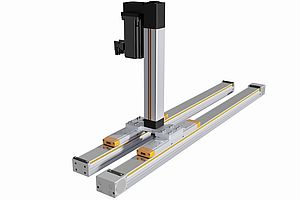IE is demonstrating an annual growth rate of 22% and currently represents 52% of the connectivity market. In recent years, several IE protocols have been introduced and widely adopted by automation equipment manufacturers due to their advantages over traditional fieldbus networks.
Beyond the availability of these protocols and their ever-broadening market acceptance, the rising popularity and usability of IE can also be attributed to a good degree of backwards compatibility and the availability of rugged components (hardwired) that are typically protected from electrical noise.
A further reason for the immense growth in the global IE market is the emergence of cloud technologies and, quite simply, more demand for connected devices. In addition, Industry 4.0 is underpinning the world’s desire for more smart factories, which operate in real time with predictive maintenance and built-in diagnostics on equipment. Ultimately, the goal of the smart factory is the elimination of downtime and the enhancement of productivity.
For this reason, such facilities must be far more intelligent, flexible and dynamic. Manufacturing processes must be organised differently, with entire production chains – from suppliers and logistics to product lifecycle management – closely connected across corporate boundaries.
Data analytics on IE networks
To achieve these ambitions, smart factories rely on the collection and analysis of data. Data analytics on an IE network means that productivity is enhanced with real-time control of manufacturing to capture and generate data that helps with predictive maintenance and facilitates decisions based on accurate reporting of what is trending on the shop floor.
Using analytics can be accomplished in many ways. Data, for example, can be stored and retrieved as needed (acyclic data) or returned through the network in real time for immediate attention (cyclic data).
Ethernet in industrial settings
IE, which can be simply defined as Ethernet applied to an industrial setting, often requires rugged connectors, cables and, most importantly, better determinism – a guarantee that the network will get workloads to their intended nodes on time. In order to achieve better determinism, IE uses specialist protocols.
Indeed, several application-layer protocols for IE, such as Profinet, Ethernet /IP, EtherCAT and others, have today been widely adopted across industry as users seek out increased data rates and distances.
Each protocol has its own set of attributes and so selection is application dependent. For instance, Profinet has the compatibility to support a standard TCP/IP stack alongside real-time channels. Alternatively, ordinary switches and other standard IE infrastructures can be used when using EtherNet/IP, which helps control equipment costs. And with regard to EtherCAT, this protocol introduced the principle of pass-through reading (on-the-fly processing), which eliminates single-node targeting and allows for maximum bandwidth utilisation.
Regardless of which protocol best suits the application, these breakthroughs have been more than sufficient to make IE a major fixture in control systems around the world.
Another benefit of IE is compatibility with standard access points, routers, consumer switches, hubs, cables and optical fibre. Meanwhile, peer-to-peer architectures are able to replace master-slave configurations, giving better interoperability. IE not only saves space and wiring, it simplifies commissioning by offering highly available system integration tools.
How to achieve IE connectivity in automation equipment
Although industry is clearly witnessing greater take-up of IE, the key for automation equipment developers has been achieving IE connectivity in a cost-effective and simple way. Now, however, any engineer tasked with finding a cost-effective means of connecting pneumatic valves to IE, can consider utilising the latest high-capability, high reliability network nodes.
An example is the recently introduced P2M IE network node from Parker Hannifin. Developed with advanced factory automation in mind, the node is easy to configure. As a result, the company’s H Universal ISO Series valve, Moduflex valve and H Micro valve families can now connect to the IE network.
This node with integrated diagnostics makes network connectivity a beneficial alternative to traditional hardwired networks. It is right that solutions of this type should help to reduce complexity and cost at the machine, while supporting the simple diagnostics required for alignment with the needs and objectives of smart factories and Industry 4.0.
Parker now offers a full range of IE connectivity options, including EtherNet/IP, Profinet IO, EtherCAT, Ethernet PowerLink, Modbus TCP/IP and CC-Link IE protocols.
Network portal for on-machine flexibility
Also boosting network connectivity is Parker’s H Series Network Portal, which provides on-machine flexibility for IE application on the H Series ISO valve with Universal manifold. The network portal handles machine digital or IO-Link I/Os, eliminating the need for additional PLC input and output cards or other remote modules. Having the I/O on the valve manifold via the network portal allows for easy and cost-effective centralised machine application, even in caustic, wash-down or hazardous areas, and even where extreme temperatures are prevalent.
Demanding automation applications, such as motion control and safety, are ideal candidates for IE as both can benefit from the reliability and extra bandwidth that this connectivity solution brings. Ultimately, low-cost connectivity with integrated diagnostics has at last become reality, further reducing complexity and cost at the machine, while aligning with the needs of smart factories and Industry 4.0.
Future horizons
Looking to the future, IE networks are likely to continue growing and become a mainstay in industrial communications, helping to control industry and infrastructure by connecting different devices, machines, systems and users, regardless of location. The IE compatibility of key automation components such as pneumatic valves is vital if industry is to leverage the full benefits that total and reliable connectivity can bring.























